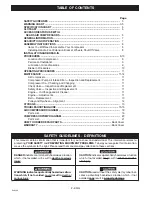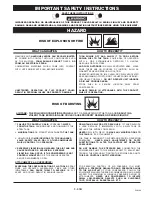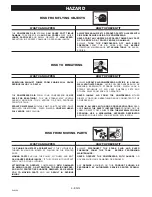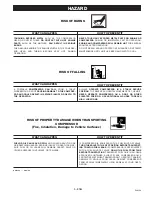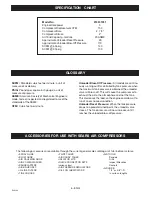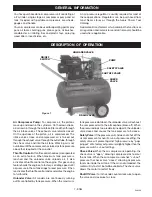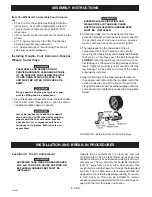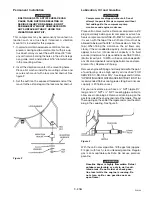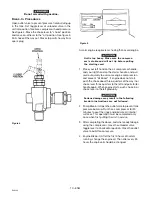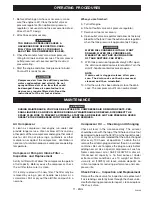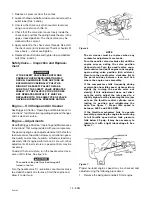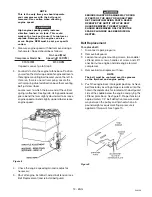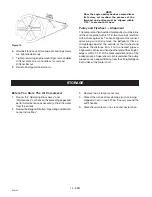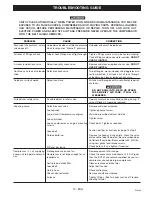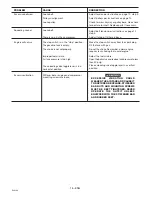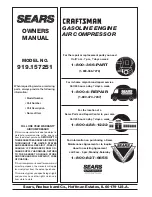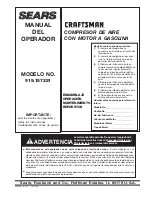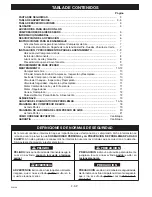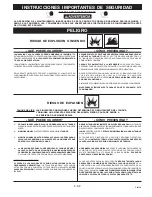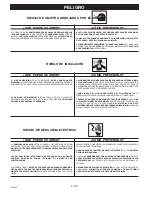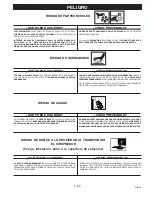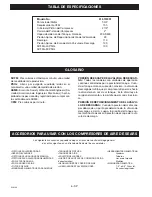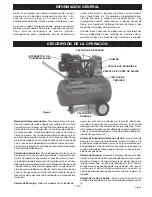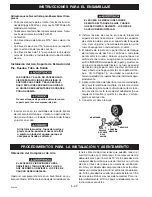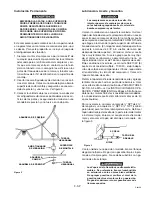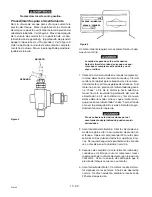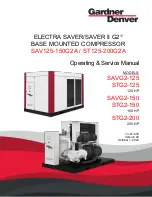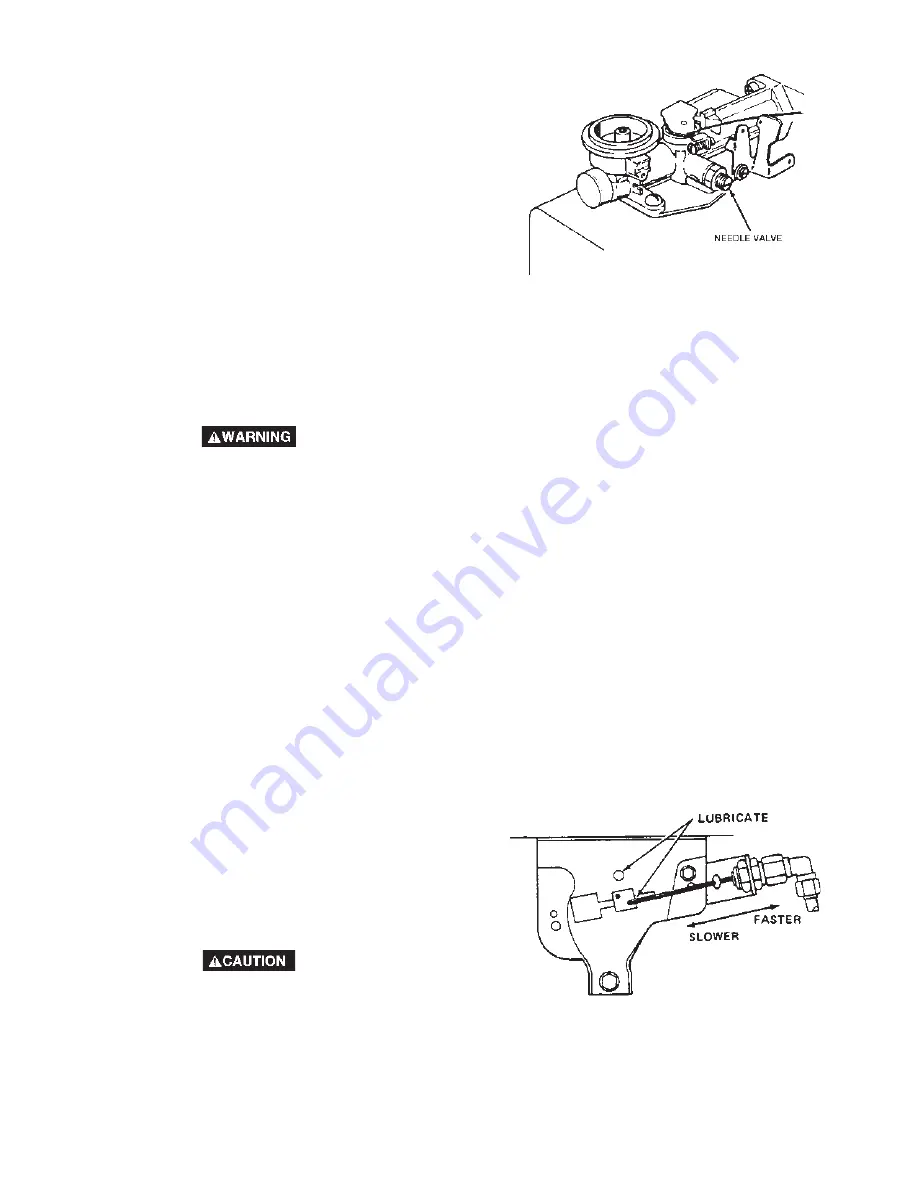
12 - ENG
D20396
1. Release air pressure from the air tank.
2. Loosen the top and bottom tube nuts and remove the
outlet tube (Nos. 4 and 6).
3. Unscrew the check valve (turn counterclockwise)
using a socket wrench (No. 3).
4. Check that the valve disc moves freely inside the
check valve and that the spring holds the disc in the
upper, closed position. The check valve may be
cleaned with a solvent.
5. Apply sealant to the check valve threads. Reinstall
the check valve (turn clockwise). The disc should still
move freely — do not overtighten.
6. Replace the outlet tube and tighten top and bottom
nuts (Nos. 6 and 4).
Safety Valve — Inspection and Replace-
ment
IF THE SAFETY VALVE DOES NOT WORK
PROPERLY OVER-PRESSURIZATION MAY
OCCUR, CAUSING AIR TANK RUPTURE OR
EXPLOSION. OCCASIONALLY PULL THE
RING ON THE SAFETY VALVE TO MAKE
SURE THAT THE SAFETY VALVE OPERATES
FREELY. IF THE VALVE IS STUCK OR DOES
NOT OPERATE SMOOTHLY, IT MUST BE
REPLACED WITH THE SAME TYPE OF VALVE
HAVING AN IDENTICAL PRESSURE RATING.
Engine — Oil Change and Air Cleaner
See Briggs & Stratton "Operating and Maintenance In-
structions" for information regarding engine oil changes
and air cleaner service.
Engine — Adjustments
Read the Briggs & Stratton "Operating and Maintenance
Instructions" that were provided with your compressor.
The gasoline engine was adjusted and set at the factory
to ensure correct operation. However, variations in gaso-
line quality and octane, humidity, altitude or load may
adversely affect engine performance. As a result, minor
adjustments of fuel mixture or speed controls may be
necessary.
To adjust the fuel mixture, turn the needle valve clock-
wise until it closes. See figure 6.
The needle valve point may be damaged if
turned in too far.
Turn the needle valve 1½ revolutions counterclockwise
to establish a point of reference. Start the engine and
allow it to warm up.
Figure 6
NOTE
The air cleaner must be in place when any
carburetor adjustments are made.
Turn the needle valve clockwise (in) until the
engine misses, noting the valve position
(lean mixture). Turn the needle valve coun-
terclockwise (out) until engine runs roughly,
again noting valve position (rich mixture).
Now, turn the needle valve clockwise (in) to
the point midway between lean and rich
where the engine runs smoothly.
If the compressor stalls frequently during
acceleration from idle speed, richen mixture
sightly (by turning the needle valve out
slowly). If this adjustment does not elimi-
nate the stalls, adjust the idle speed to a
slightly higher level by loosening the two jam
nuts on the throttle control cylinder, read-
justing its position and retightening the
nuts. See figure 7. Proper idle speed is
between 2400 and 2600 RPM.
If the throttle mechanism fails to operate
smoothly, preventing the engine from returing
to full throttle speed when tank pressure
falls below 90 psig, it may be necessary to
lubricate it with a light lubricating oil. See
figure 7.
Proper no-load engine speed may be checked and
adjusted using the following procedures:
1.
Remove the belt guard and belt. Start engine
Figure 7


